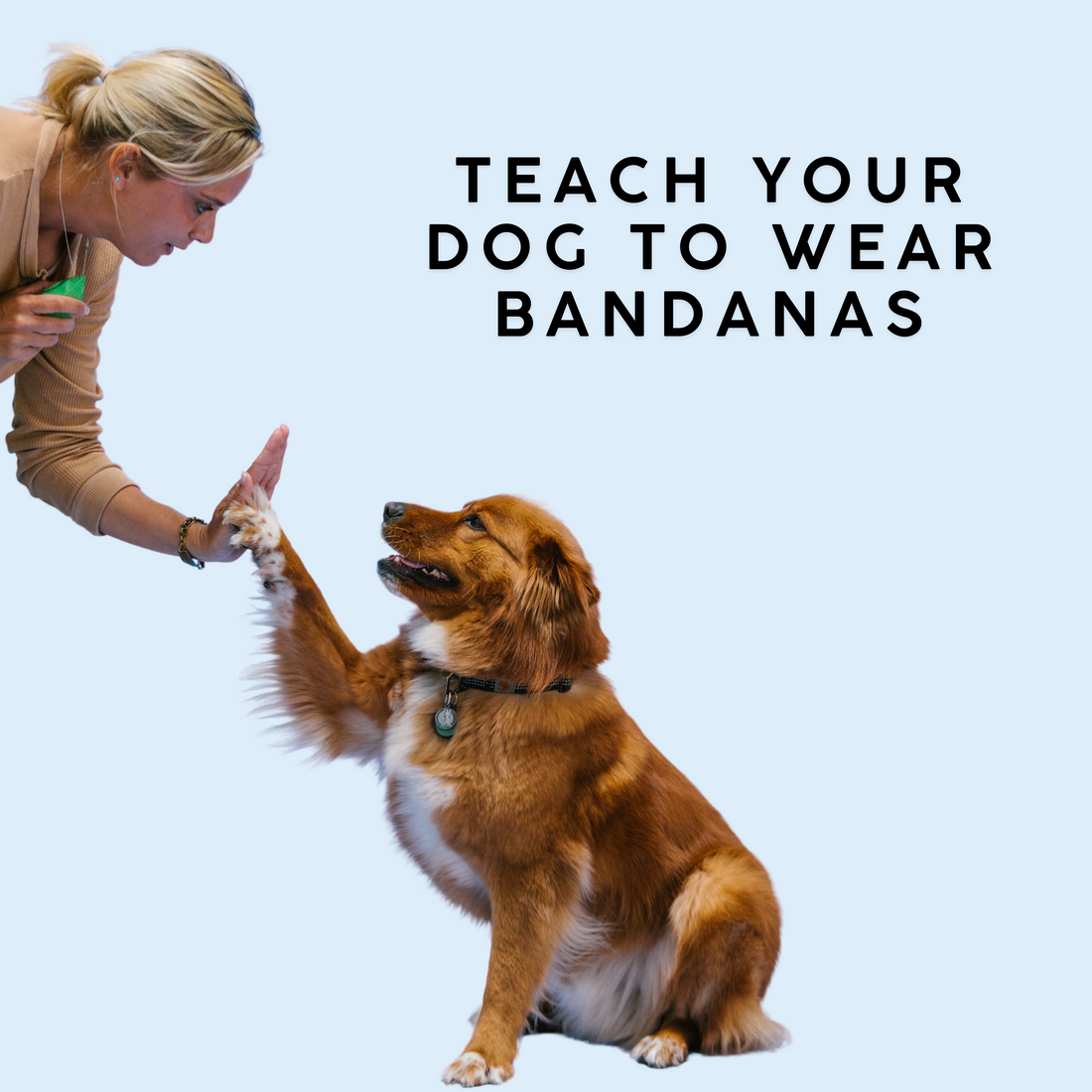
Using Dog Bandanas - Dog Trainer Shows You How
Share
Remi - Seek K9
As a dog owner, you probably know that one of the first accessories your dog will wear is a collar. It’s not only a practical tool for identification, but it’s also an easy way to personalise your pet’s style. Some dogs take to collars right away, while others need a little more time to adjust. Below, we’ll guide you through introducing your dog to collars and then take it a step further with bandanas—because who doesn’t love a dog with a little extra flair?
Step 1: Choosing the Right Collar
Before you even introduce your dog to a collar, it’s important to choose the right one. A collar should be:
- Comfortable: Make sure the collar isn’t too tight or too loose. You should be able to fit two fingers comfortably between the collar and your dog’s neck.
- Durable: Whether you go for nylon, leather, or another material, ensure the collar is sturdy and can withstand your dog’s daily activities. You don’t want it to break during a critical moment like crossing a busy road.
- Adjustable: As your dog grows (especially puppies), an adjustable collar allows for easy resizing.

For a puppy or a dog who hasn’t worn a collar before, finding the right collar that is comfortable and size appropriate will set you and your dog up for success.
Step 2: Getting Your Dog Used to Wearing a Collar
Not all dogs take to wearing a collar immediately. Some may resist or seem uncomfortable at first, which is completely normal. Here’s how you can help your dog adjust:
-
Start Slow
The key is to introduce the collar slowly. Start by showing it to your dog and letting them sniff and explore it. This helps them become familiar with the new object and reduces any uncertainty they may have about it. -
Put it on for Short Periods
The first few times you put the collar on, leave it on for just a few minutes at a time. Gradually increase the duration as your dog becomes more comfortable. Don’t try to keep the collar on for too long initially, as that might make your dog more resistant to it. -
Make the Collar a Positive Experience
Whenever you put the collar on your dog, give them a treat and lots of praise. Creating a positive association with the collar makes your dog more likely to accept it. -
Monitor for Discomfort
Pay attention to signs that your dog is uncomfortable, such as scratching at the collar, pulling at it, or acting bothered. If this happens, take the collar off, give them a break, and try again later. -
Gradual Integration into Daily Life
Once your dog is comfortable wearing the collar indoors, try adding it to their walks.
Step 3: Introducing Bandanas on Collars
Now that your dog is comfortable with a collar, you might want to dress them up with a fun accessory like a bandana from Lucie & Co. Bandanas on collars are an adorable way to add a little personality to your dog’s look, and most dogs are more open to wearing them once they’ve gotten used to collars.

Here’s how to introduce bandanas on collars:
-
Start with a Soft, Lightweight Bandana
A lightweight, soft bandana is a great choice for your dog’s first experience. Speak to the crew at Lucie & Co for their recommendations within their amazing range. -
Attach the Bandana to the Collar
There are different ways to put a bandana on your dog, depending on the style of the bandana. Some are designed to slip directly onto the collar, while others tie around the neck. The key is to make sure it’s secure but not too tight. You don’t want the bandana to be restrictive or cause discomfort. -
Start with Short, Fun Sessions
Just like with the collar, introduce the bandana gradually. Let your dog wear it for just a few minutes the first time and gradually extend the time as they become more comfortable. If they seem to be bothered by it, take it off and try again later. -
Observe Your Dog’s Comfort Level
As your dog adjusts, watch for any signs of irritation, like scratching at the bandana or trying to pull it off. If they’re showing signs of distress, take the bandana off. -
Make it a Positive Experience
Reward your dog with treats and praise each time they wear the bandana. This will help them associate the bandana with something positive and will make them more likely to wear it again. -
Gradual Introduction to Longer Wear
Once your dog is used to wearing a bandana for short bursts, try wearing it for longer periods, like during walks or playtime. The goal is for your dog to feel comfortable and confident wearing the bandana for all kinds of activities.
Step 4: Finding the Right Style and Design
Once your dog is comfortable with collars and bandanas, the fun part begins—choosing the right bandana designs! Here are a few tips:
- Match Your Dog’s Personality: Opt for bright colours or patterns that suit your dog’s temperament. Does your dog have a bold personality? Go for a vibrant, eye-catching print. For a more laid-back pup, a soft, pastel-coloured bandana may be a perfect fit.
- Seasonal and Themed Bandanas: Holiday-themed bandanas or seasonal prints (like flowers for spring or reindeers for Christmas) are a great way to show off your dog’s festive spirit.

Step 5: Keep It Clean and Comfortable
As with any pet accessory, it’s important to keep the collar and bandana clean and in good condition. Wash the bandana regularly and inspect both the collar and bandana for wear and tear.
Final Thoughts
Introducing your dog to collars and bandanas can be a fun and rewarding process, but it’s important to do it at your dog’s pace. Every dog is different, and some may take longer than others to get used to these accessories. The key is patience and ensuring that your dog is always comfortable.
Once your dog is accustomed to wearing both collars and bandanas, you’ll not only have a stylish companion but also a well-adjusted pet who’s happy to sport their favourite bandana—whether it’s for a walk around the block or a family photo shoot.
Happy accessorising! 🐾
Written by Remi from Seek K9


